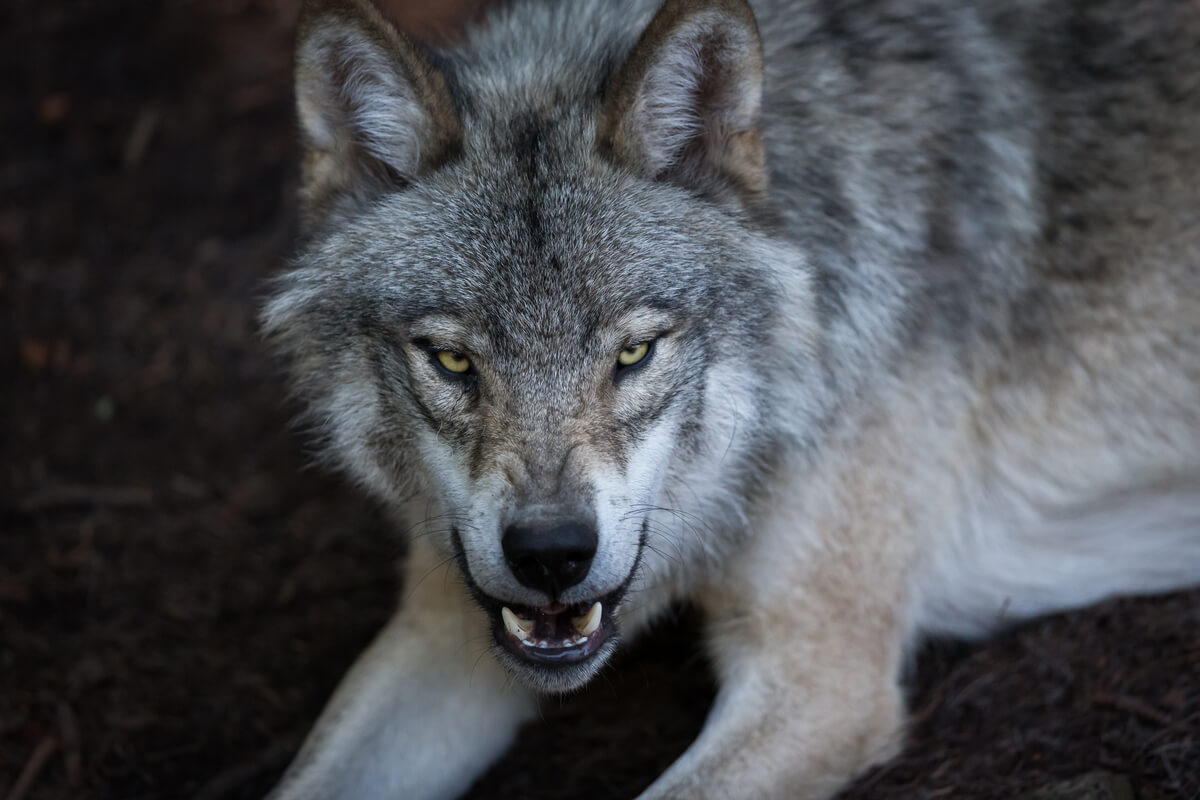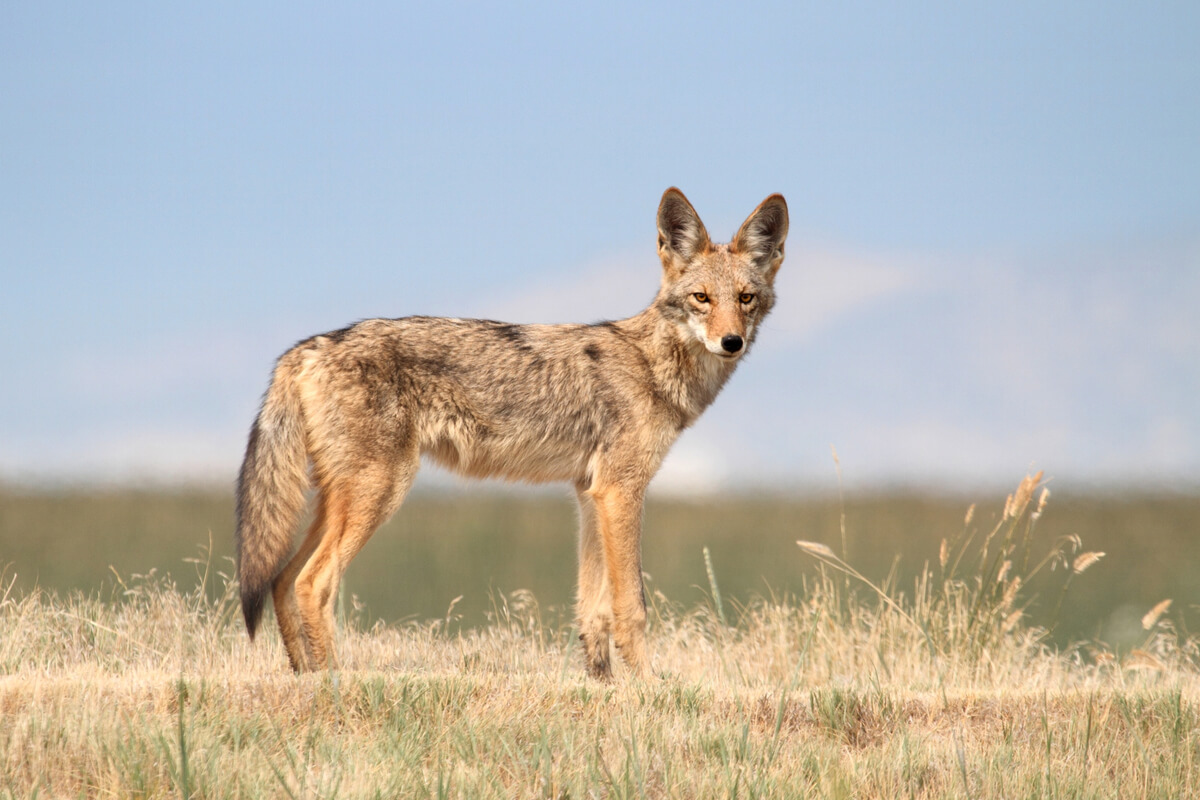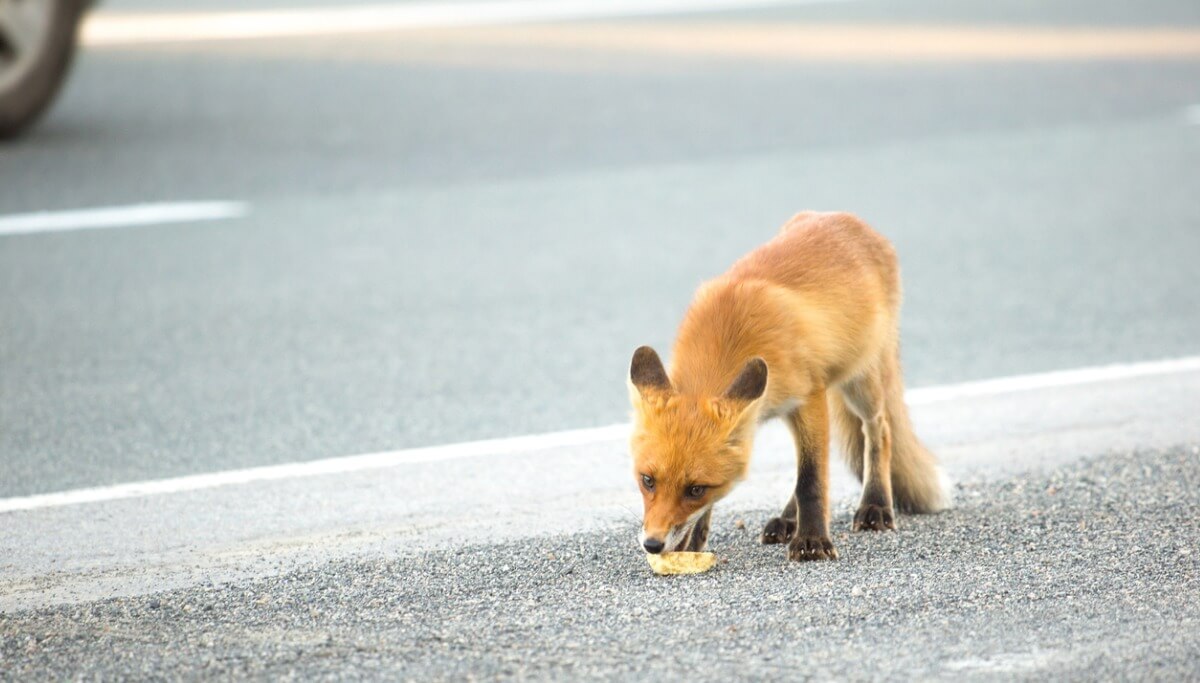The Differences Between Wolves, Foxes and Coyotes

Canids are a very diverse family of carnivorous mammals, with about 34 current species. Most of them have a very similar body design, which makes it very easy to identify them as members of the same family. However, this trait can make it difficult to distinguish between them. Could you tell the differences between wolves, foxes, and coyotes?
In this article, we’ll discuss the most important ones. It should be noted that, under these common names, a whole series of different species come together. To avoid confusion, we’ll talk about 3 species in particular: the gray wolf (Canis lupus), the red fox (Vulpes vulpes), and the coyote (Canis latrans). Keep reading and you’ll be able to distinguish these species perfectly.
Geographical distribution
Knowing where animals live greatly facilitates their identification. Therefore, this is the first of the differences between wolves, foxes, and coyotes that we’ll discuss.
Foxes and wolves have one of the widest distributions of all mammals, spanning most of the Northern Hemisphere. Wolves appear in almost all of Eurasia, except in the British Isles. They are also sighted in Canada and the northernmost states of the US: Alaska, Minnesota, Wisconsin, Montana, Wyoming, Idaho, Washington, and Oregon.
Foxes are distributed throughout the whole of Eurasia, some North African countries (Morocco, Tunisia, Egypt, Sudan, and Libya), all of Canada and the United States, in addition to Australia. In parts of this range, they have been introduced by humans.
In contrast, coyotes have spread throughout North America, except for the colder parts of Canada, and they also appear in some areas of Central America. Therefore, no canid that’s sighted in Europe, Asia, or Africa will be a coyote.

Size differences between wolves, foxes, and coyotes
Without a doubt, one of the clearest differences between wolves, foxes, and coyotes is size. Wolves are by far the largest, weighing from 18 kilos in the smallest specimens to 79 kilos in the largest (40 to 170 pounds).
Its body reaches between 90 centimeters and 1.6 meters long (35 to 62 inches) without counting the tail, which can measure about 40 centimeters. In height, wolves can reach about 80 centimeters. In person, these animals are much larger than expected.
At first glance, coyotes are similar to wolves, but much smaller. These mammals weigh between 9 and 22 kilograms. They measure between 81 and 94 centimeters long up to the tail, which in turn reaches 40 centimeters. In addition, they reach figures between 58 and 66 centimeters high.
Foxes are the smallest of all, slightly larger than a house cat. They only weigh from 3 to 10 kilograms, their body is between 45 and 86 centimeters long and the tail shows a range of 30 to 55 centimeters. The height is around 40 centimeters.
Differences in physical aspects between foxes, coyotes, and wolves
Not only their size differentiates these animals, as their colors and proportions are also distinctive. Foxes are evolutionarily more distant from the other 2 species, which results in a more easily discernible appearance.
These small carnivores have a very showy coat, which in winter is long, dense, and intense orange in most of their bodies. The legs and ears are black, while the tip of the tail, the ventral part of the body and face are whitish. In summer the coat is similar, but shorter and less conspicuous.
In terms of their proportions, foxes are more elongated and short-legged than the rest. The tail is the longest in relation to the body and thickest, due to its dense fur.
On the other hand, wolves are the most robust, wide and muscular of these canids. Its head, large and heavy, has strong jaws and a muzzle that’s wider than the rest. The ears are smaller and triangular. Especially in winter, the fur is dense, but not as long as that of foxes.
The coloration of wolves is variable and depends on the geographical location. Typically this includes whites, grays, and blacks, but can also include shades of brown.
The coyote is considerably more graceful and slimmer than the wolf. It has large ears and a fine, long, and pointed muzzle. Their fur, which is shorter and less dense, usually has slightly orange-brown and more or less light gray tones.

Behavior and diet
Wolves are highly social animals, living in hierarchical packs. On the contrary, foxes are eminently solitary. Coyotes fall between the two: they can be solitary but they also form groups. These social strategies translate into very different behaviors between the three species that concern us here.
The wolves organize their packs perfectly to catch prey that they couldn’t kill separately and that will feed the entire group. They mainly specialize in large and medium-sized ungulates, such as deer, wild boar, or elk. Even so, they don’t hesitate to consume any other small animals and also contribute an important component of fruits, berries and vegetables to their diet. They can eat carrion too.
Coyotes are generalist and very versatile predators. They’re mainly carnivores that feed on any small or medium animal that they can catch, be they birds, mammals, reptiles, insects, etc. They’re also large carrion eaters, much more so than wolves.
In the vicinity of human populations, coyotes take advantage of urban waste or resources to feed themselves. They can even prey on cats, as studies indicate.
Lastly, foxes are omnivores. The animals they consume are mainly small prey, such as various rodents, birds, reptiles, or invertebrates. Vegetables can make up a major part of their diet, and include berries, fruits, herbs, and tubers.

With these details in mind — and with a little practice — it will be easy to correctly identify any of these canids. Although often misunderstood, all three are fascinating, valuable, and respect-worthy animals. As much as they sometimes conflict with humans, preserving them is a must.
All cited sources were thoroughly reviewed by our team to ensure their quality, reliability, currency, and validity. The bibliography of this article was considered reliable and of academic or scientific accuracy.
- https://www.nationalgeographic.com/animals/mammals/facts/canines-canids
- Boitani, L., Phillips, M. & Jhala, Y. 2018. Canis lupus (errata version published in 2020). The IUCN Red List of Threatened Species 2018: e.T3746A163508960.
- Hoffmann, M. & Sillero-Zubiri, C. 2021. Vulpes vulpes (amended version of 2016 assessment). The IUCN Red List of Threatened Species 2021: e.T23062A193903628.
- Kays, R. 2018. Canis latrans (errata version published in 2020). The IUCN Red List of Threatened Species 2018: e.T3745A163508579.
- https://www.nationalgeographic.com/animals/mammals/facts/gray-wolf
- https://www.nationalgeographic.com/animals/mammals/facts/coyote
- https://www.nationalgeographic.com/animals/mammals/facts/red-fox
- Hidalgo‐Mihart, M. G., Cantú‐Salazar, L., González‐Romero, A., & López‐González, C. A. 2004. Historical and present distribution of coyote (Canis latrans) in Mexico and Central America. Journal of Biogeography, 31: 2025-2038.
- Gehrt, S. D., Wilson, E. C., Brown, J. L., & Anchor, C. 2013. Population ecology of free-roaming cats and interference competition by coyotes in urban parks. PLoS One, 8: e75718.
This text is provided for informational purposes only and does not replace consultation with a professional. If in doubt, consult your specialist.